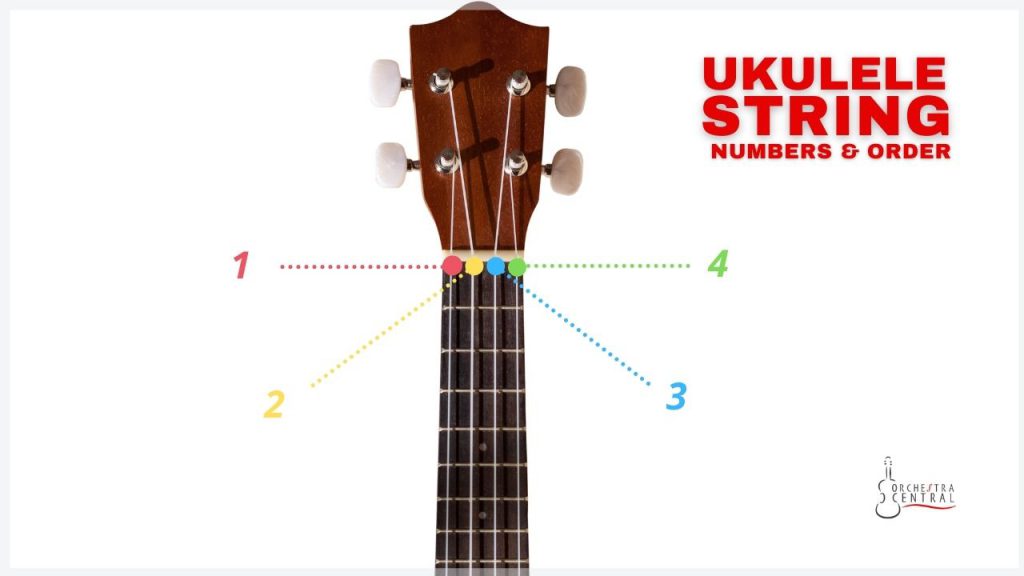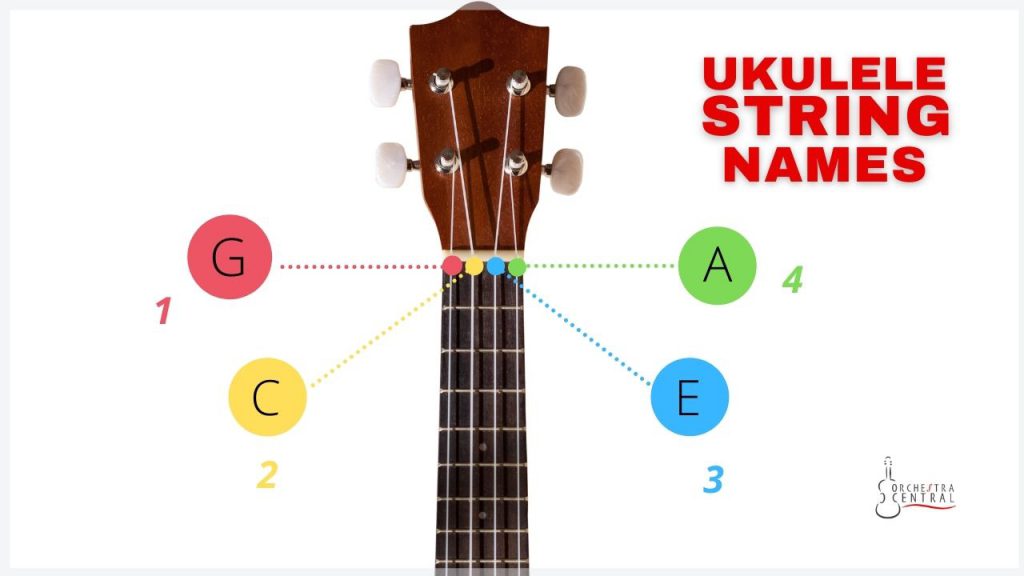A new ukulele player might find it difficult to track which string to play. The good news? There’s an easier way! Knowing how many different color-coded sets you have available will make tuning much more intuitive, too. In this article, we will describe different ukulele string names and numbers. And, we’ve included why you might find it easier to use a number rather than just calling them by their name.
Ukulele String Numbers and Order

Strings are crucial for making sure everything sounds right, so pay close attention here as we go into detail about each one.
The numbers on the strings on a ukulele are 4-3-2-1. If you’re holding it as you would play, then string 4 is closest to the ceiling, and 1st string goes down towards ground level for ease of movement while playing with your left hand or foot, respectively.
The ukulele string order of 4-3-2-1 corresponds to the string notes G-C-E-A.
Ukulele String Names

Knowing the ukulele string’s names by heart is essential since this forms a basis for tuning it. You need to understand all the ukulele string notes so that you can communicate clearly about its tuning.
The ukulele string names acronym is: GCEA
The four strings available are:
- G (1st)
- C(2nd)
- E(3rd)
- A (4th)
Soprano / Tenor / Concert Ukes’ String Names
When holding your instrument like you’re playing it, G will be closest towards the ceiling and so forth down through C, with right-handed players reversing this for left-handers.
You should never forget that soprano, tenor, and concert uke string names are similar.
The order of the strings on your ukulele can be challenging to remember, but it’s easy once you know what “Good Charlie Eats A lot” acronym means. The first letter in each word stands for one string name, and as long as we can remember this acronym (strings), there won’t ever be any chance of forgetting what was said before or after!
High G and Low G Ukulele Tuning
Low G ukulele tuning is just like the traditional G-C-E, with an octave lower on its highest string. How about high G ukulele tuning?
A traditional ukulele tuning is high-G or re-entrant that produces a bright sound that complements the tiny bodies of these instruments well for many types of music, including blues and jazz but not necessarily pop tunes which require lower notes on average anyway.
If you’re looking for the deepest tones possible, then low-G tuning is right up your alley. If bright and catchy ukulele sounds are more what capture your ear, however – high-G surely has what it takes!
Baritone Uke String Names
The Baritone ukulele has two options for tuning – high G and low G. However, most people play with a D-G-B-E tuning for their instrument’s sound to be similar to that of guitars. There is a standard preference for the standard DGBE (tuned from low tones up), but you may experiment by tuning in GCEA for more of those soprano/concert range notes if desired.
“Goats Can Eat Anything” is the best mnemonic to remember this tuning.
Conclusion
This is your perfect guide to Ukulele string names, notes, and numbers. You should now be able to talk about tuning your ukulele with other people.
Table of Contents






